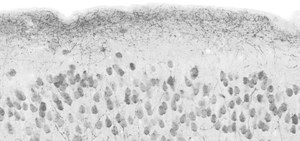Information about past experiences and current aims is a central element of all higher brain functions, but our understanding of such of internally-generated top-down signals in health and disease is limited. We use a combination of imaging, electrophysiology, cell-type specific targeting, optogenetics, viral tracing and behavior to dissect these mechanisms in the auditory cortex.
Neocortex is the
largest and most powerful area of the mammalian brain. This region has expanded
and differentiated the most during evolution, mediates many of the capacities
that distinguish humans from their closest relatives, and also plays a central
role in many psychiatric disorders. All higher cognitive
functions of the neocortex are enabled by bringing together two distinct
streams of information: a ‘bottom-up’ stream carrying signals from the
surrounding environment, and a ‘top-down’ stream that transmits internally-generated
information encoding our previous experiences and current
aims.
Whereas decades of
work have addressed processing of sensory bottom-up information, our
understanding of internally-generated information is still in its infancy. Our
work aims to fill this gap by elucidating the mechanisms and consequences of
top-down information processing in the auditory cortex. Using a combination of
cutting-edge approaches (including 2-photon & 1-photon imaging,
electrophysiology, optogenetics, viral tracing and computational analyses)
together with behavioral paradigms, we address the following questions:
1) Which
brain-wide afferents convey which type of top-down information to neocortex?
2) How are
these top-down signals translated by local inhibitory interneurons to flexibly adjust circuit function?
3) Which aspects
of information processing is subject to top-down modulation?
4) How does
top-down information optimize brain function for complex, naturalistic
behaviors?
5) How do
perturbations of top-down processes contribute to brain disorders?








